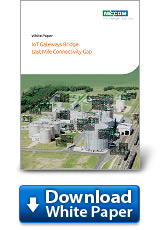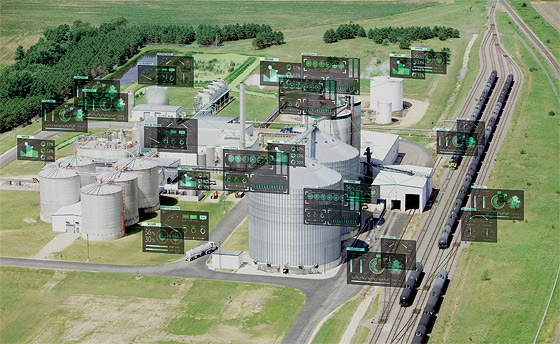IoT Gateways Bridge Last Mile Connectivity Gap
 The Internet of Things (IoT) has been around for a while. Leveraging network connection, IoT provides an end-to-end communication channel for data to be securely gathered, exchanged, stored, and analyzed among front-end devices, sensors, and back-end databases. Nevertheless, the lack of unified protocols and interfaces impeded IoT development until IoT gateways are made available and cloud computing and Big Data analysis emerge.
The Internet of Things (IoT) has been around for a while. Leveraging network connection, IoT provides an end-to-end communication channel for data to be securely gathered, exchanged, stored, and analyzed among front-end devices, sensors, and back-end databases. Nevertheless, the lack of unified protocols and interfaces impeded IoT development until IoT gateways are made available and cloud computing and Big Data analysis emerge.
"To extend the full potential and create value for enterprises, IoT relies on close connections among sensors, gateways, networks, and servers; and IoT gateways play a key role in building these connections", according to Alex Perng, NEXCOM Chief Technology Officer.
Users used to get little analyzable data out of various PLCs using different protocols; human-machine or machine-to-machine coordination was nearly out of the question. However, IoT gateways with multi-protocol support, address the last mile connectivity shortfall in IoT applications.

PC-based Architecture Bypasses Protocol Obstacles
IoT gateways are unified communication platforms which can bypass protocol gaps, connecting front-end systems to back-end systems. Data generated by including pressure pneumatic systems, automated machine, robots, advanced measuring systems, and cameras can be aggregated, stored, and analyzed in enterprise servers, yielding valuable business intelligence.
IoT gateways based on the PC-based architecture, undoubtedly, match the application needs. The PC-based architecture equips IoT gateways with not only standardized interfaces such as PCI and USB for expanding protocol supports but also computing power for performing software-based protocol conversion. The architecture helps enterprises harvest data across industrial appliances, shedding light on protocol interoperability among disparate factory subsystems.
NEXCOM's x86- and ARM-based IoT gateways based on the PC-based architecture feature interfaces cards, I/O modules, and a user-friendly graphical user interface (GUI), accessing and transforming field data into readable formats for cloud analysis.
Monitoring and Security Mechanism for Remote Management
The unified monitoring and security mechanism allows efficient and secured remote management. By adopting dedicated device authentication hardware and encryption algorithms, for instance, Trusted Platform Module (TPM), IoT gateways enhance management efficiency and system security at the same time. Managers can remotely monitor asset status without large-scale deployment of on-site personnel.
To promote the universal standard and ensure IoT endpoint interoperability, more and more alliances are established, including Industrial Internet Consortium (IIC), The Open Interconnect Consortium (OIC), AllSeen Alliance, Thread Group, and IPSO Alliance. The open and unified PC-based architecture not only supports protocols used by different vertical segments but also allows intercommunications among devices regardless of generational technology gap. It ultimately paves way for better human-machine or machine-to-machine collaboration.
Take motors for instance. Plant operators used to rely on PLCs and sensors to extract a motor's RPM data. The data access and interpretation were never easy while maintenance managers only distinguished a motor as healthy and not healthy. The production could have gone awry when the RPM value started fluctuating, indicating the need for close monitoring of motors.
True values of IoT gateways are clear. This platform can collect RPM value over time and convert them into charts. Plant managers can notice subtle change in the RPM value, predict possible deterioration in machinery performance and condition, and conduct a preventive inspection to avoid costly future repairs.
- Related Links:
- Edge Computing and Automation Simplify Path to Green Manufacturing
- FWA Over 5G Explained: The Role of 5G uCPE
- Browse Other News:
- Unlocking the Power of Vehicle Telematics: A Compact Solution Enhances Public Transportation for Smarter, Safer and Happier Mobility
- NEXCOM’s New Software-Defined Edge Computing Solutions at Embedded World 2024
- All White Papers News

